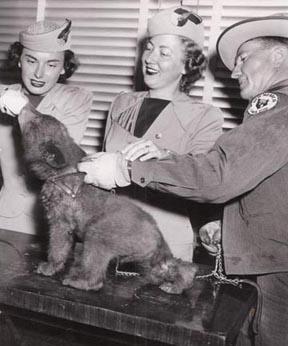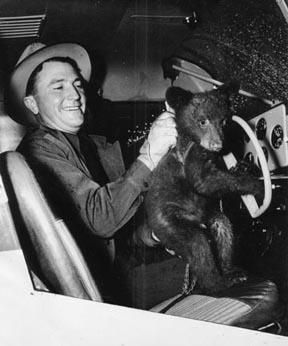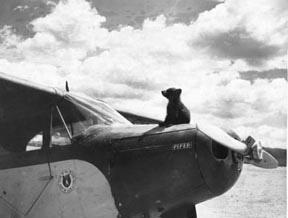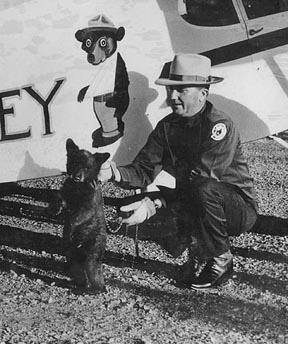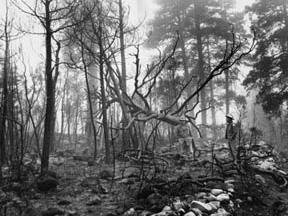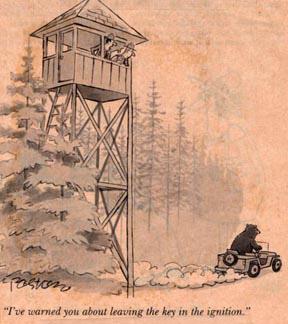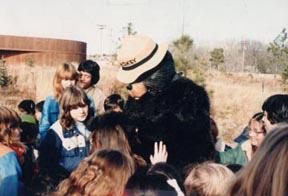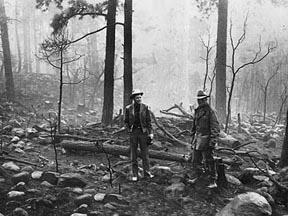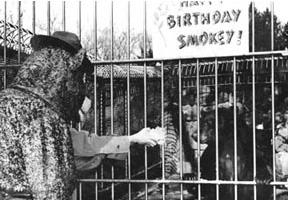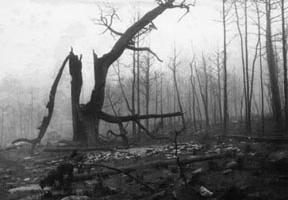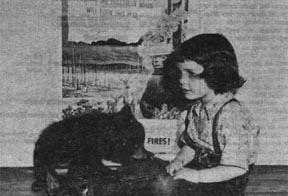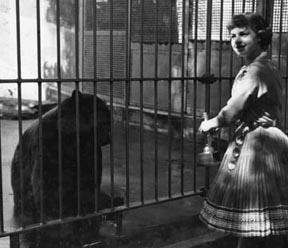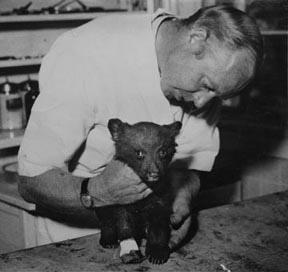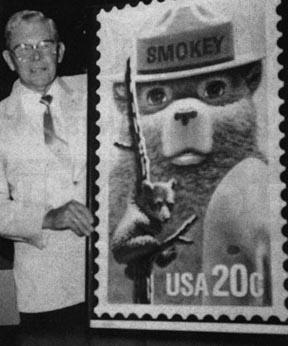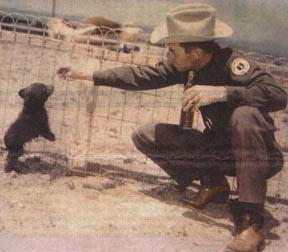Capitan, New Mexico is the birthplace and burial site of Smokey Bear. On May 4, 1950, a carelessly discarded cigarette started the Los Tablos blaze in the Lincoln National Forest. On May 6, a second fire, known as the Capitan Gap fire started in the same general area. Together these fires destroyed 17,000 acres of forest and grasslands. The monetary loss to private property was great but the loss to the environment was even greater.
In May 8, a 70 mile per hour wind made it impossible to control the blaze. It was on this day that nineteen men were trapped in a rock slide while the raging holocaust, incredibly, spared them. They were rescued without any fatalities, but later expressed the opinion that they knew "just how a slice of toast feels."
On May 9, a fire crew brought a badly singed bear cub into the fire camp. They had found the frightened cub clinging tenaciously to the side of a burnt pine tree. Badly burned about the buttocks and feet, he was given the name "Hotfoot", a description soon to be changed to Smokey Bear. His burns were tended to overnight at the nearby Flatley Ranch, then flown by Game Warden Ray Bell to the veterinary hospital in Santa Fe. Bell later kept Smokey in his home, where, it is said, he was a "mite domineering" with the other family pets and somewhat of a ham.
In 1944, prior to the discovery of Smokey Bear, the Forest Service and the Advertising Council originated and authorized the use of a poster by artist Albert Staehle, depicting a bear called Smokey. A later depiction by Rudolph Wendelin is still used in fire prevention campaigns. The popularity of the campaign grew so great, after the inclusion of Smokey, that in 1952 Congress passed a bill into law governing the commercialization of the name and image of Smokey Bear. Due to the vast amount of mail he was receiving, Smokey was given his own zip code. Upon Smokey's recovery in Santa Fe, the Forest Service had Smokey flown to Washington D.C.
It is rumored that on this flight, an airport refused the pilot's request to land because a bear was aboard the plane! In July of 1950, the U.S. Senator Chaves of New Mexico, presented Smokey to the school children of America. Smokey was now in his permanent home at the National Zoo where millions visited and marveled at his story.
New Mexico adopted the black bear as the state animal in 1962, and, on its golden anniversary in 1962, a female bear companion named Goldie from Magdalena, New Mexico was sent to the Washington Zoo. No cubs were ever born to Smokey and his mate.
Upon his death in 1976, at the urging of his many friends, Smokey's body was returned to his beautiful and beloved Capitan Mountains. He now rests in peace, buried in a small park which bears his name; in the heart of the Village of Capitan and in the shadow of the mountains where it all began. In 1984, Rudolph Wendelin designed a 20 cent postage stamp depicting a bear cub clinging to a burnt tree with the famous Smokey Bear emblem as a background. This was the first and only time the U.S. Postal Service has issued a postage stamp honoring an individual animal. Capitan was chosen for the first day sale of this commemorative stamp fifty years after the inception of Wendelin's poster.
Smokey Bear, the Lincoln National Forest, the beautiful and rugged Capitan Mountains, are all part of the saga of dedicated and caring people who were brought together by a miracle of nature... all a part of the history of Capitan.
Thanks to Frank E. Miller and Dorothy Guck for providing information for this epic story. Photos courtesy of the Smokey Bear Museum. Aftermath of Capitan Gap Fire, Hopalong Cassidy and Smokey, Homer Pickens & Smokey
Judy Bell and Smokey. Game Warden Ray Bell & Smokey

